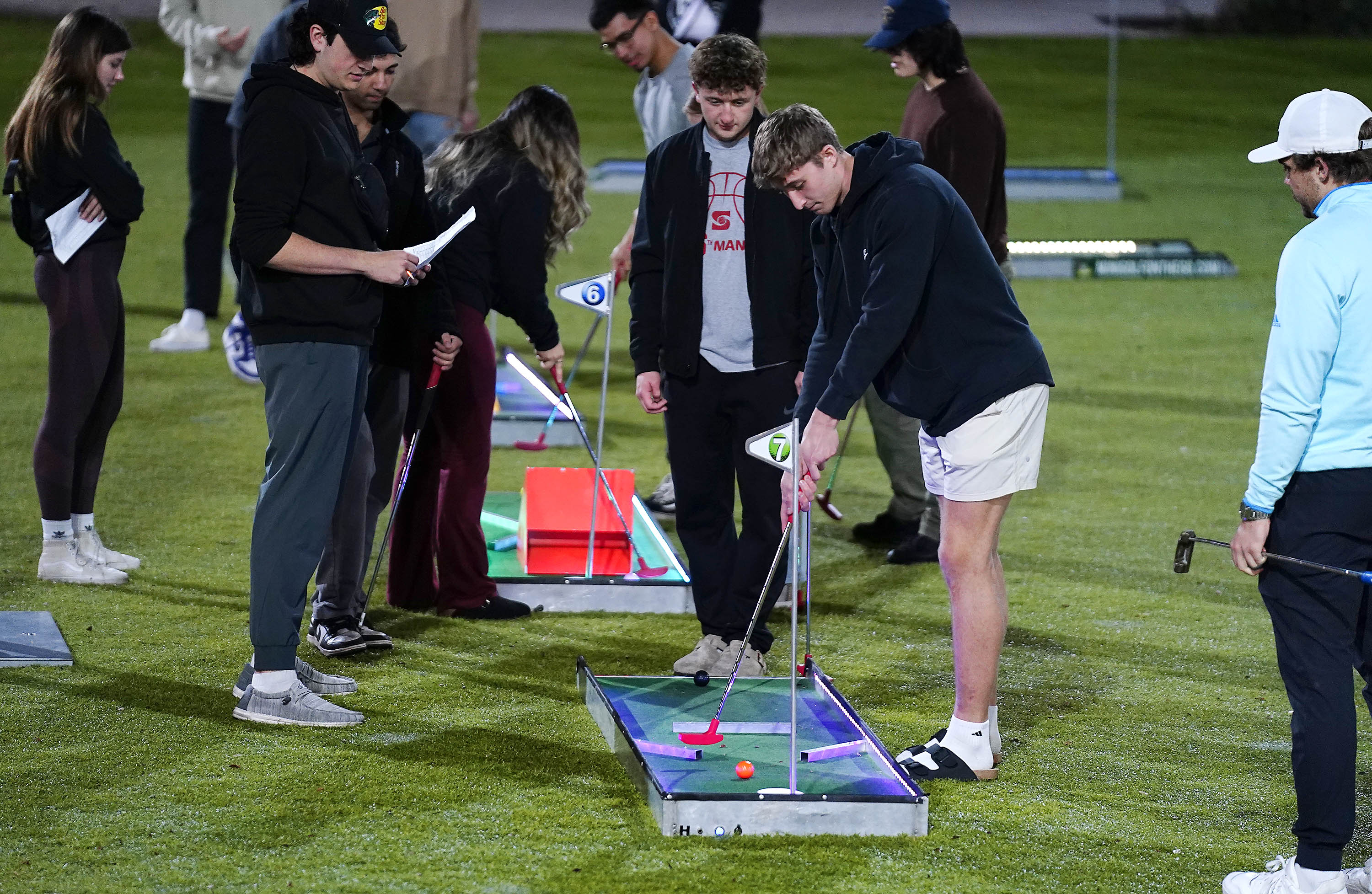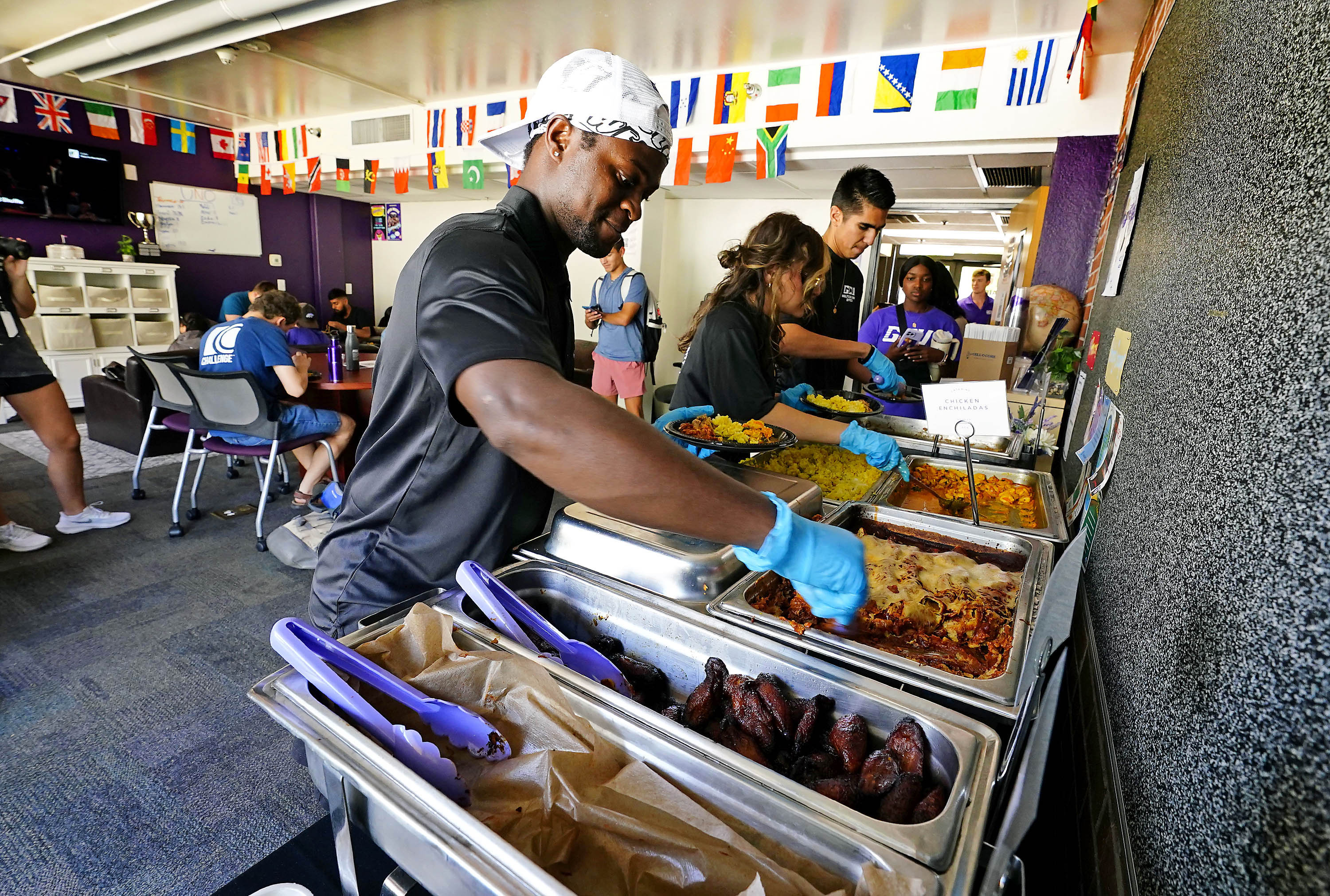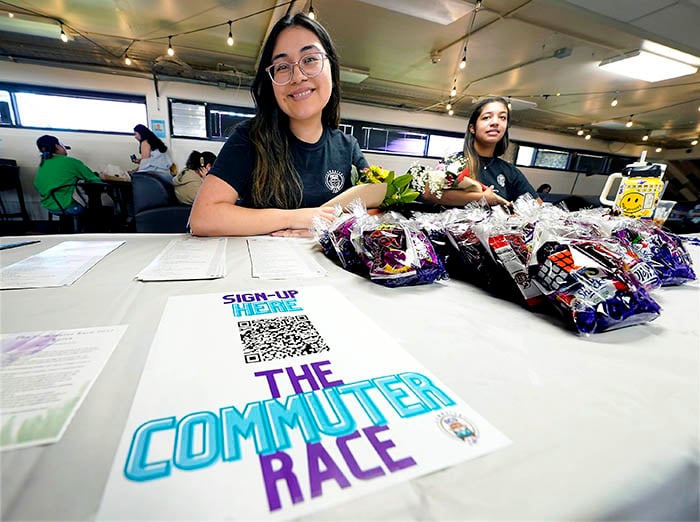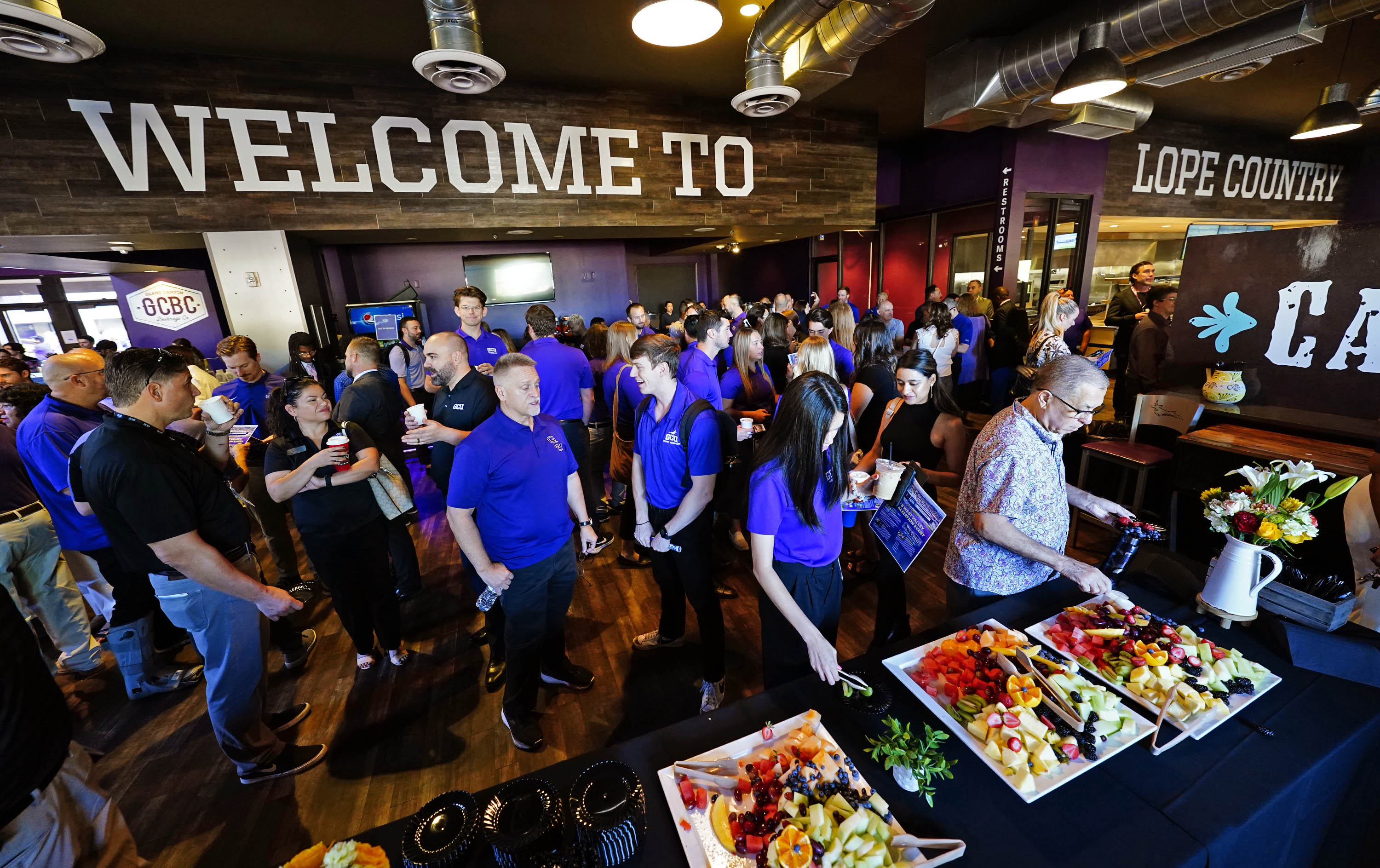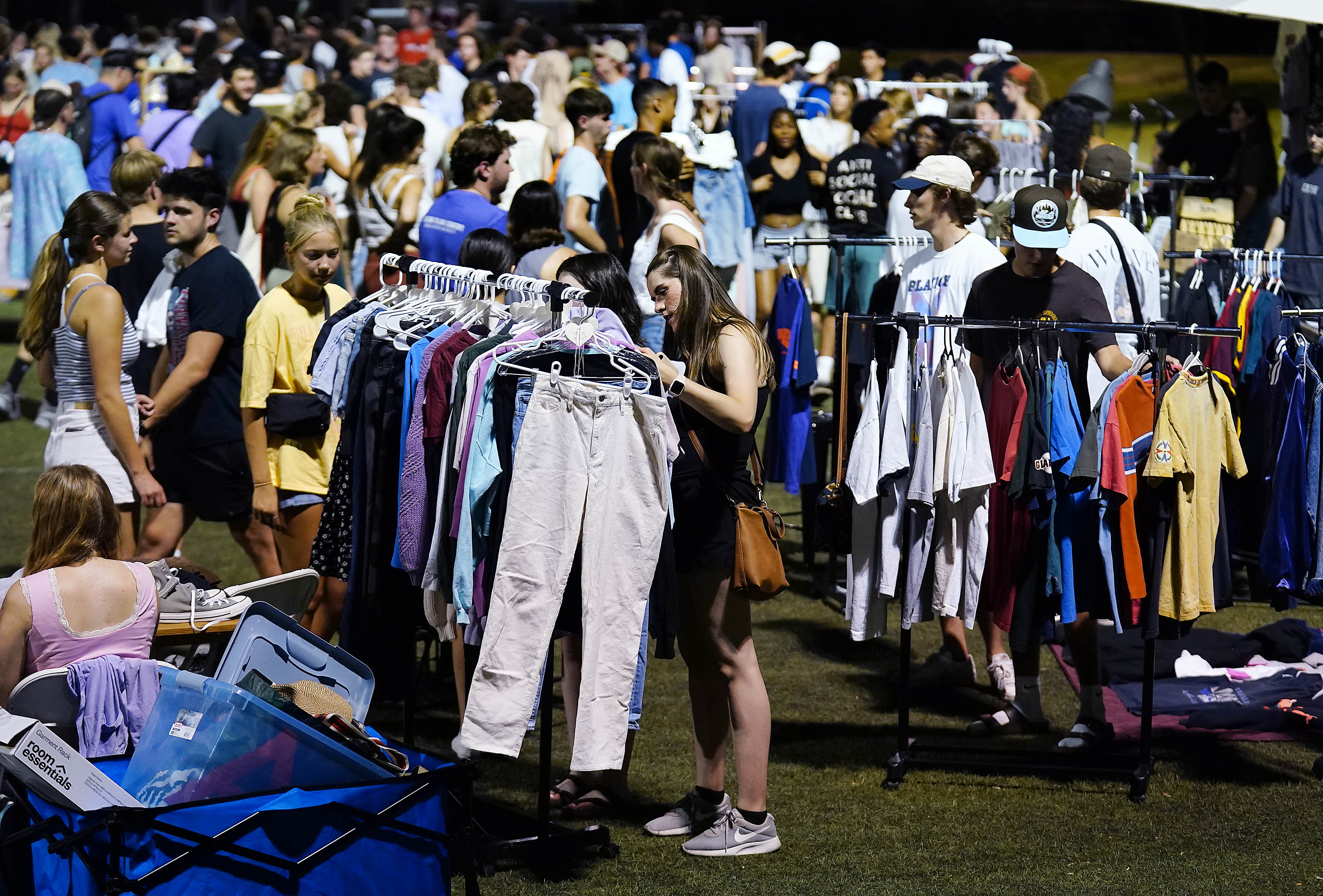
Photos by Ralph Freso / Slideshow
Gage Hropoff was explaining his research proposal, zipping through facts. Wages for the top 1% have grown seven times as fast as the wages for the bottom 90% in the last 40 years. Then he dropped the prescriptive bombshell for growing inequity: increased capital gain taxes.
A student listening to his presentation asked him: “What would you say to the people busting their b… to make that money?”
Academic discussion was central to the College of Humanities and Social Sciences Fall Senior Showcase, presented for the first time this year in the fall semester (another showcase is slated for the spring). Dozens of senior students lined the four walls of classrooms in the CHSS building Tuesday morning, summaries of their capstone reports taped to the wall behind them or displayed on a laptop screen.
Adding a fall showcase gives December graduates the same opportunity to highlight their work as April graduates, said Dr. Heidi Boldway, CHSS assistant dean.
“It helps them build confidence, speak professionally and concisely about their field or about anything else. It helps them with a job interview, and for many of them, this could be a job interview based on those who attend,” she said of employers who drifted through rooms or occupied tables outside the building.
As for Hropoff, the government major was on his toes with his response. His research proposal is to more accurately find a way to measure wealth in the U.S. to attack economic inequality, he said. One way is to tax appreciation of stocks and bonds equal to income. The benefit of taxing just the top .3% of taxpayers would bring in $1.5 trillion for programs for the economically disadvantaged, what he calls a biblical call.

Other research was less controversial.
In the math majors room, Havocs President Wilson Neitzel and Kalvin Haywood took their interest in basketball – especially the Lopes – to a new level. They dug into statistics for assists and three-point shooting percentage in GCU men’s basketball games during the 2023-24 season and found a correlation. The more assists the better the 3-point shooting percentage.
“Losses as well. When we have fewer assists, we have lower 3-point percentage and more losses,” said Neitzel, who helps lead the student cheering section.
Math instructor Dr. Huy Dinh said typically the last semester is student teaching for math students, so this fall’s showcase allowed them to show how math is involved in so many fields.
“I know there are a lot of stats in sports, but people don’t think math,” he said. “Another student is working on flight delays. Are there any factors that could make it go faster? So, I really like the applications that students are doing.”

The fall showcase was launched after Sophia Ruhl-Raingruber, president of the Sociology and Social Work Club, thought the work of all students should be represented, whether they graduated in winter or spring.
The social work major presented her project on “Menstrual Inequality,” which explored toxic chemicals used in feminine products and their availability to economically disadvantaged populations.
“I’m first-generation American – my mom is from Australia – and we didn’t talk to our parents about such things. So, I didn’t know about the options,” she said.
Some students hope to use the capstone research for business.
Senior John Sedlmayr showcased his work on finding the perfect balance between a water filter’s thickness and the solar power needed to flow water through it. He hopes to one day sell a device that utilizes that research.

Others hope to make the world a better place with stories.
“I want to help people help people,” said professional writing major Samantha Miller, who was showcasing a story she wrote about a nonprofit, work she hopes to do for a living. She says she’ll be traveling to Egypt after graduation with a fledging nonprofit to help them write a book.
They bring their own passions to research proposals, too. Communications major Sophia Vanderhoff said she has seen firsthand through her life how there are generational differences among church members on the stigma attached to mental health problems.
“It should be an inclusive space,” she said of church. “We are all equal in the eyes of God. If we build empathy for people, it will really help our church be stronger and the people with mental health issues be more supported.”

The largest contingent of students were those from psychology, social work and behavioral health science. Most were studying foster care, substance abuse and children’s issues.
Melanie Galindo wanted to research the stigma attached to anxiety disorders among teen-age Chicanos. She said older generations of parents often don’t understand anxiety.
“Obviously they had so many hardships coming to America,” she said, so when their children have anxiety problems they ask why. “You didn’t have to struggle.”
She hopes to one day to use her capstone ideas to start a family support group program in Phoenix.
Grand Canyon University senior writer Mike Kilen can be reached at [email protected]
***
Related content:
GCU News: Helping others centers College of Humanities and Social Sciences Showcase
GCU News: Social work program earns accreditation, students prepared to meet high need







